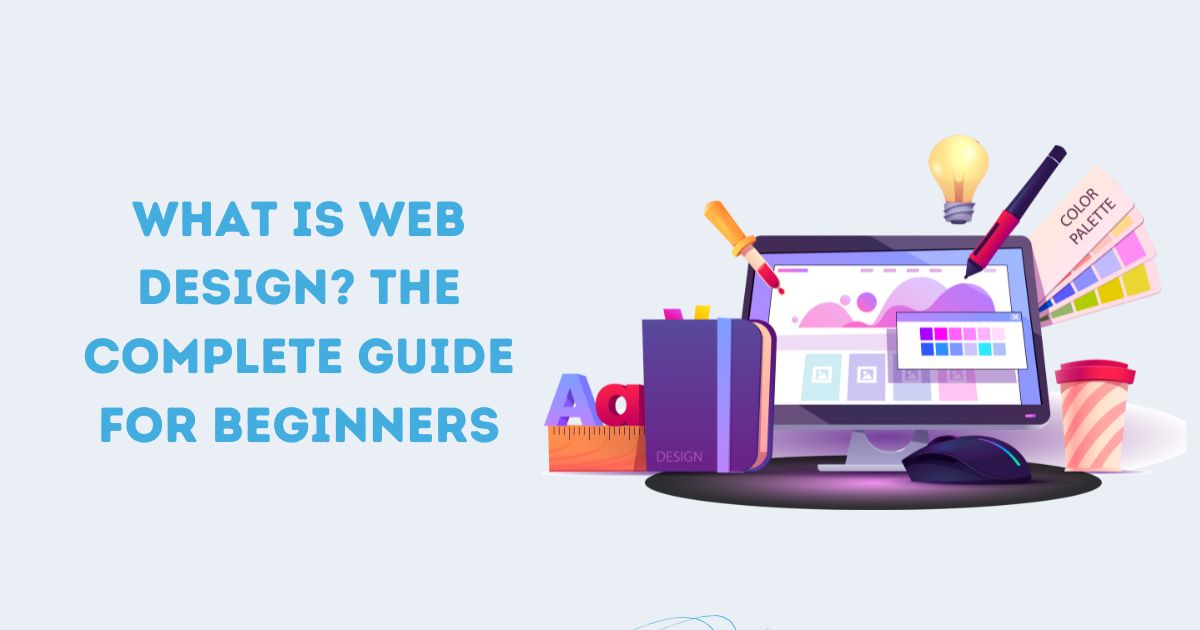Web design shapes every digital experience you encounter online. From the sleek homepage of your favorite shopping site to the intuitive navigation of your banking app, web design determines how you interact with the digital world.
But what exactly is web design? Many people confuse it with web development, assuming they’re the same thing. While these fields overlap, they serve distinct purposes in creating websites that both look stunning and function flawlessly.
This guide will walk you through everything you need to know about web design, from its core principles to how it works alongside web development to create the websites we use every day.
Understanding Web Design: More Than Just Pretty Pictures
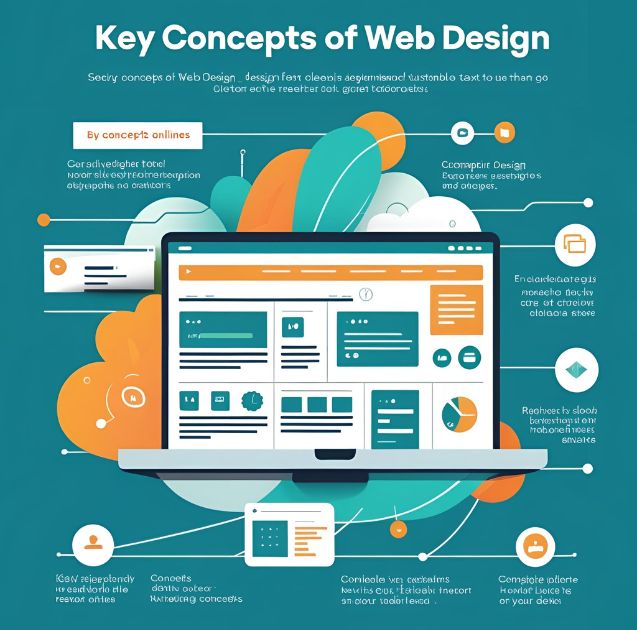
Web design is the process of planning, creating, and organizing content for websites. It encompasses the visual elements you see on a webpage—colors, fonts, images, and layout—as well as the user experience aspects that determine how easy and enjoyable a site is to navigate.
Think of web design as the blueprint for a house. Just as architects consider both aesthetics and functionality when designing a building, web designers must balance visual appeal with user needs. They decide where buttons should be placed, how information should be organized, and what colors will best represent a brand.
Good web design goes beyond making things look nice. It solves problems. When a user visits a website, they usually have a specific goal: buying a product, finding information, or completing a task. Web designers create pathways that help users achieve these goals as efficiently as possible.
Key Elements That Make Web Design Work
Visual Hierarchy and Layout
Visual hierarchy guides users’ eyes through a webpage in order of importance. Designers use size, color, and positioning to emphasize key elements. For example, headlines are typically larger and bolder than body text, while call-to-action buttons often use contrasting colors to stand out.
Grid systems help designers organize content in a structured, pleasing way. These invisible guidelines ensure elements align properly and create a sense of order that makes information easier to digest.
Color and Typography
Color choices can make or break a website’s effectiveness. Different colors evoke different emotions and associations. Blue often suggests trust and professionalism, which is why many financial institutions use it. Red can create urgency or excitement, making it popular for sale announcements.
Typography involves more than just picking fonts. Designers must consider readability, brand personality, and how text will appear across different devices. A playful script font might work well for a children’s party planning service, but would be inappropriate for a law firm’s website.
Images and Graphics
Visual content helps break up text and can communicate complex ideas quickly. Stock photos, custom illustrations, icons, and infographics all serve different purposes in web design. The key is choosing visuals that support the content rather than distract from it.
Modern web design often embraces white space—the empty areas around elements. This negative space helps prevent pages from feeling cluttered and allows important elements to breathe.
Web Design vs. Web Development: Understanding the Difference
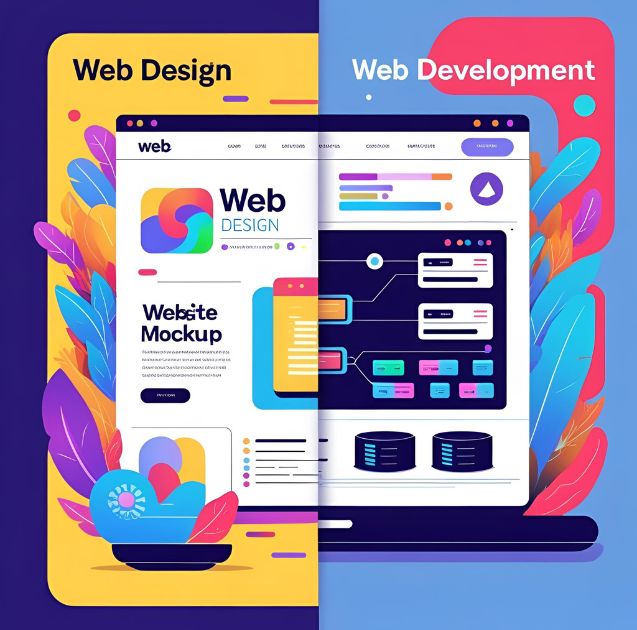
While web design and web development often work hand in hand, they focus on different aspects of website creation.
Web design is primarily concerned with the user-facing elements of a website. Designers create mockups, choose color schemes, design layouts, and plan user interactions. They think about questions like: “Where should the navigation menu go?” and “What should happen when someone clicks this button?”
Web development, on the other hand, involves the technical implementation of these designs. Developers write the code that makes websites function. They handle the behind-the-scenes programming that processes forms, manages databases, and ensures everything works smoothly across different browsers and devices.
Many professionals specialize in one area or the other, but some full-stack developers handle both design and development tasks. Understanding both disciplines helps create better websites, as design decisions often impact technical implementation and vice versa.
Types of Web Design Approaches
Responsive Design
Responsive design ensures websites work well on all devices, from large desktop monitors to small smartphone screens. Instead of creating separate mobile and desktop versions, responsive design uses flexible layouts that adapt to different screen sizes.
This approach has become essential as mobile internet usage continues to grow. Search engines like Google now prioritize mobile-friendly websites in their rankings, making responsive design crucial for online visibility.
User Experience (UX) Design
UX design focuses on the overall experience users have when interacting with a website. UX designers conduct research to understand user needs, create user personas, and map out user journeys. They ask questions like: “How can we make this process easier?” and “What might frustrate users on this page?”
Good UX design is often invisible—users simply feel that a website is easy to use without thinking about why. Poor UX design, however, becomes immediately apparent when users can’t find what they’re looking for or struggle to complete basic tasks.
User Interface (UI) Design
UI design deals with the specific interactive elements users encounter—buttons, forms, menus, and other interface components. While UX design focuses on the overall experience, UI design zeros in on the details of how these interactions look and feel.
UI designers create style guides that define how buttons should look, what happens when users hover over links, and how forms should be styled. Consistency in UI design helps users predict how different elements will behave.
The Web Design Process: From Concept to Launch
Discovery and Planning
Successful web design projects begin with thorough research and planning. Designers work with clients to understand business goals, target audiences, and project requirements. This phase might involve analyzing competitors, reviewing existing brand materials, and defining the website’s scope.
Creating a sitemap helps organize content and plan navigation structure. This bird’s-eye view of the website ensures nothing important gets overlooked and helps identify potential usability issues early.
Wireframing and Prototyping
Wireframes are simplified blueprints that show the basic structure of web pages without getting distracted by colors, fonts, or images. They focus on layout, content hierarchy, and functionality.
Prototypes take wireframes a step further by adding interactive elements. Clickable prototypes allow stakeholders to experience how the website will work before development begins, making it easier to identify and fix problems.
Visual Design
Once the structure is approved, designers create the visual appearance of the website. This involves choosing colors, fonts, images, and other visual elements that align with the brand and appeal to the target audience.
Style guides document these design decisions, ensuring consistency across all pages and providing clear direction for the development team.
Testing and Refinement
Good web design is iterative. Designers test their work with real users, gather feedback, and make improvements. This might involve A/B testing different layouts, conducting usability tests, or analyzing user behavior through heat maps and analytics.
Essential Tools and Skills for Web Designers
Design Software
Professional web designers typically use specialized software to create their designs. Adobe Creative Suite, including Photoshop, Illustrator, and XD, remains popular among many designers. Sketch and Figma have gained significant traction, especially for UI/UX design work.
These tools allow designers to create mockups, prototypes, and assets that can be handed off to developers for implementation.
Technical Knowledge
While web designers don’t need to be expert programmers, understanding basic HTML, CSS, and JavaScript helps them create more realistic designs and communicate better with development teams. Knowledge of web development constraints helps designers create beautiful designs that are also technically feasible.
Understanding content management systems like WordPress, Drupal, or custom solutions also helps designers create practical designs that clients can easily update and maintain.
Soft Skills
Web design requires strong communication skills, as designers must understand client needs and present their ideas clearly. Problem-solving abilities are crucial, as design challenges often require creative solutions that balance multiple competing requirements.
Staying current with design trends, user behavior research, and technological advances helps designers create relevant, effective websites.
Current Trends Shaping Web Design
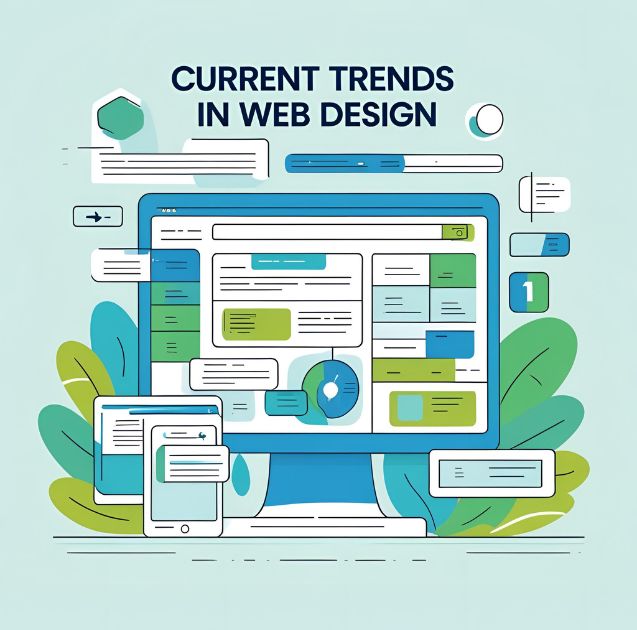
Minimalism and Clean Design
Modern web design often embraces simplicity. Clean layouts with plenty of white space, minimal color palettes, and focused content help users concentrate on what matters most. This approach also tends to load faster and work better on mobile devices.
Accessibility and Inclusive Design
Web designers increasingly prioritize accessibility, ensuring websites work for users with disabilities. This includes considerations for color contrast, keyboard navigation, screen reader compatibility, and cognitive accessibility.
Inclusive design goes beyond compliance with accessibility standards to create experiences that work well for the widest possible range of users.
Performance and Speed
Fast-loading websites provide better user experiences and rank higher in search results. Designers now consider performance implications when choosing images, animations, and other elements that might slow down page loading.
Getting Started: Your Next Steps in Web Design
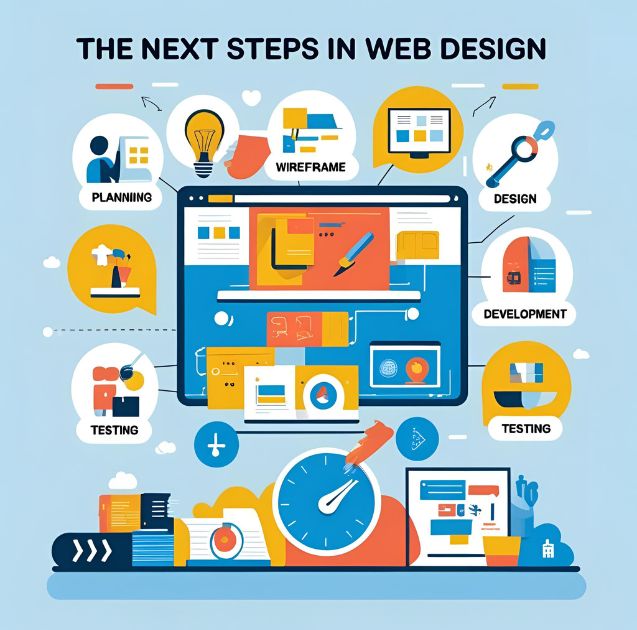
Web design offers exciting opportunities for creative problem-solving and has strong job market prospects. The field continues to evolve as new technologies emerge and user expectations change.
If you’re interested in pursuing web design, start by learning the fundamentals of design principles, color theory, and typography. Experiment with design tools and practice creating mockups for fictional projects. Study websites you admire and analyze what makes them effective.
Consider taking courses in UX/UI design, and don’t forget to learn basic HTML and CSS to understand better how your designs will be implemented. Building a portfolio of practice projects will help you develop skills and demonstrate your abilities to potential employers or clients.
Remember that great web design balances aesthetics with functionality, always keeping user needs at the center of every decision. Whether you’re planning to become a professional designer or simply want to understand how the web works, these principles will serve you well.

